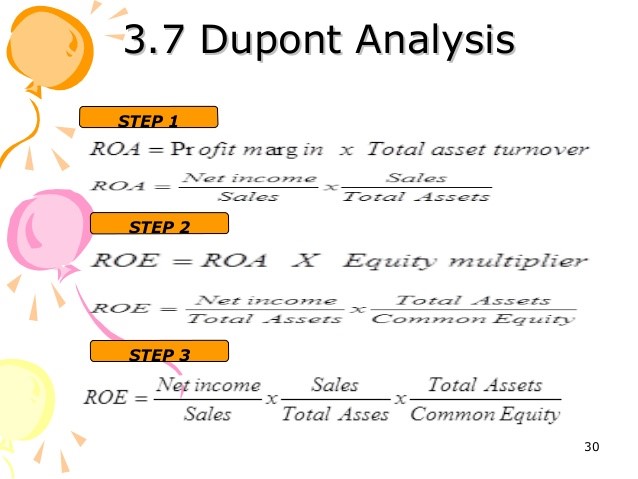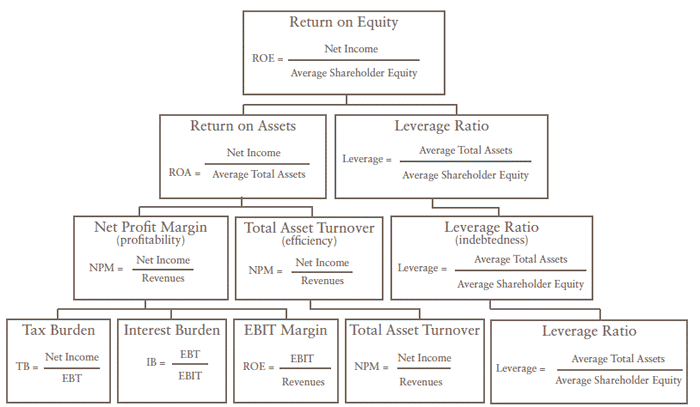It is a strong measure of how well a company's management creates value for its shareholders.
ROE is the return that a company generates on its equity capital. It is a strong measure of how well a company's management creates value for its shareholders.
ROE: Net Income/Shareholder’s Equity
Normally, when the ROE goes up it is a very healthy sign for the company as the shareholder’s equity is increasing. But ROE can also increase because the company is taking more debt which will eventually decrease the shareholder’s equity. This would increase company’s leverage which could be good.
Du-Pont Analysis
Du-Pont Analysis breaks down the components of ROE (net income/shareholder’s equity). These components help us understand better as to what really affected the company’s profitability.
- 3 step Du-Pont Calculation

ROE: Net Profit Margin X Asset Turnover X Equity Multiplier
- Net Profit Margin: Net Income/Sales is net profit margin ratio of net profits to revenues for a company or business segment typically expressed as a percentage that shows how much of each rupee earned by the company is translated into profits.
- Asset Turnover: Sales/Total Assets is asset turnover ratio of the value of a company’s sales or revenues generated relative to the value of its assets.
- Equity Multiplier: Total assets/Shareholder’s Equity is a measurement of a company's financial leverage.
If the ROE increases due to increase in either net profit margin or asset turnover it’s a good indication but in case of equity multiplier it just adds to the leverage taken by the company.
- 5 step Du-Pont Calculation

The five-step, or extended DuPont equation breaks down net profit margin further. From the three-step equation we saw that, in general, increase in the net profit margin, asset turnover and leverage will increase ROE. The five-step equation shows that increase in leverage does not always indicates an increase in ROE.
The Net Profit Margin is further broken down into three categories:
- Tax Burden: Net Income/EBT: A higher value for the tax burden implies that the company can keep a higher percentage of its pretax profits, indicating a lower tax rate.
- Interest Burden: EBT/EBIT: Higher the borrowing cost lower would be the ROE.
- EBIT Margin: EBIT/Revenue: This captures the effect of operating margin or EBIT margin on ROE. This ratio measures the effect of operating profitability on ROE.
The remaining two components are same as above, i.e. Asset Turnover and Leverage Ratio.
Real Effect of Dupont Analysis
A simple calculation of ROE may be easy and could reveal a lot about the health of the company but it does not necessarily provide the whole picture. If a company's ROE is lower than its peers, the three or five-step identities can help show where the company is lagging. It can also shed light on how a company is lifting or propping up its ROE. Thus, DuPont analysis helps us get a better understanding of ROE. As always with financial statement ratios, they should be examined against the company's history and its peers.




